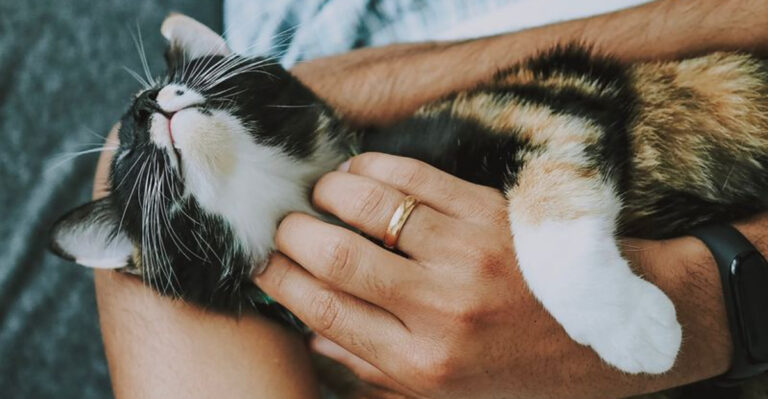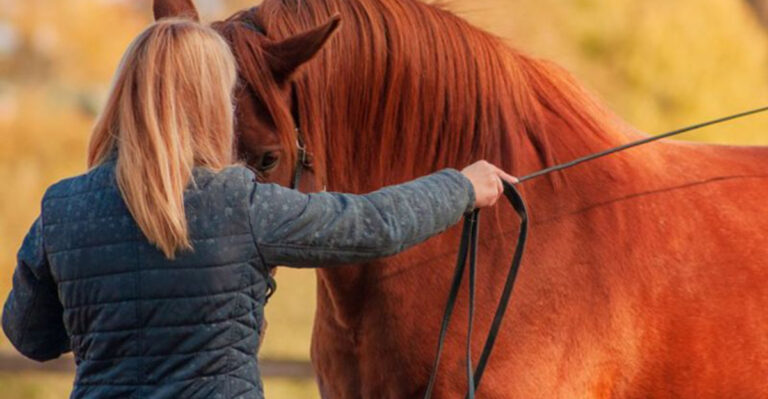Top 10 Pet Birds That Are Surprisingly Easy To Train
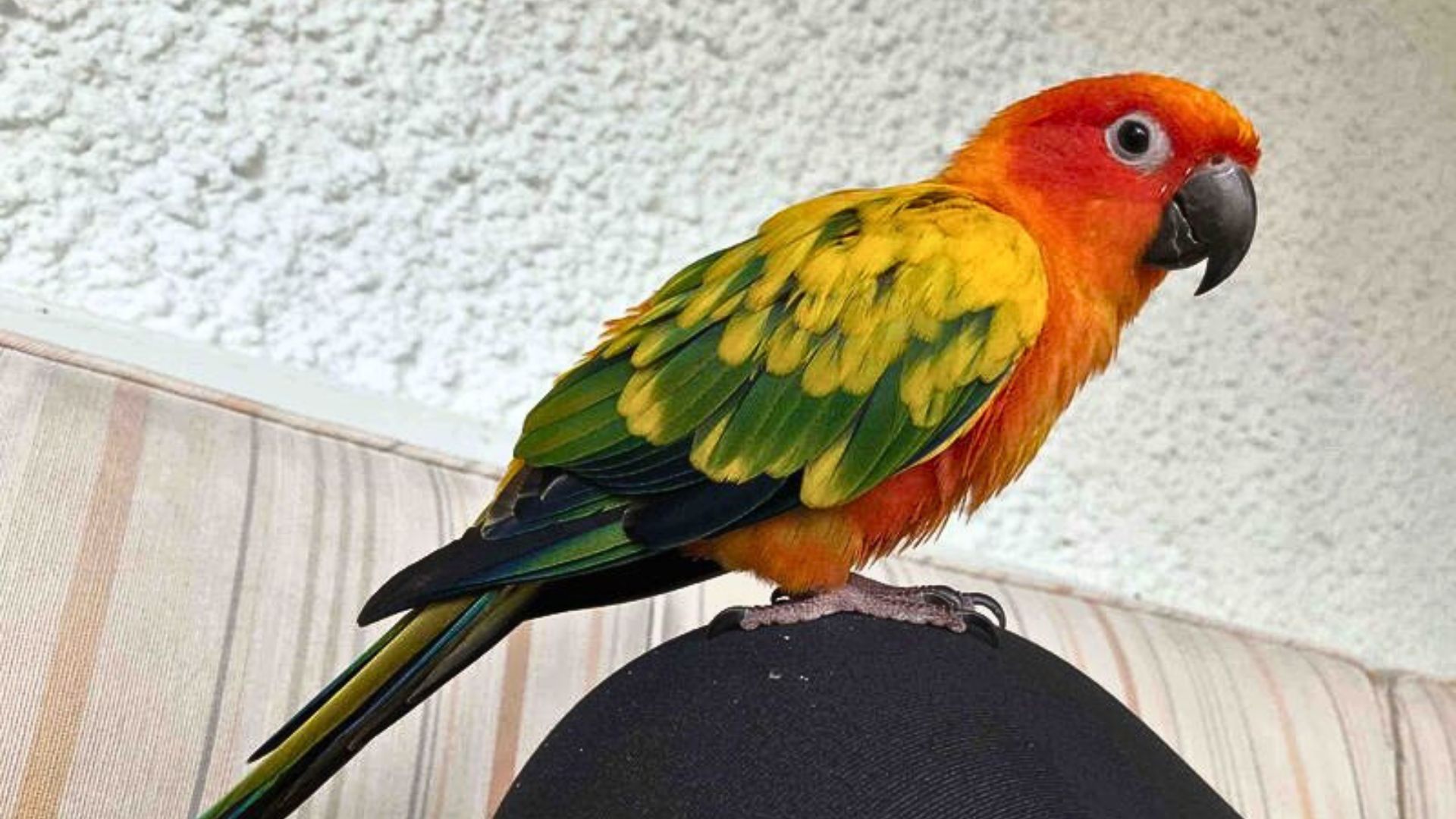
Training pet birds can be an incredibly rewarding experience, and some species are more adept at learning new tricks and commands than others.
In this post, we explore ten delightful bird species that are surprisingly easy to train, making them ideal companions for bird enthusiasts of all levels.
1. Budgerigar (Budgie)
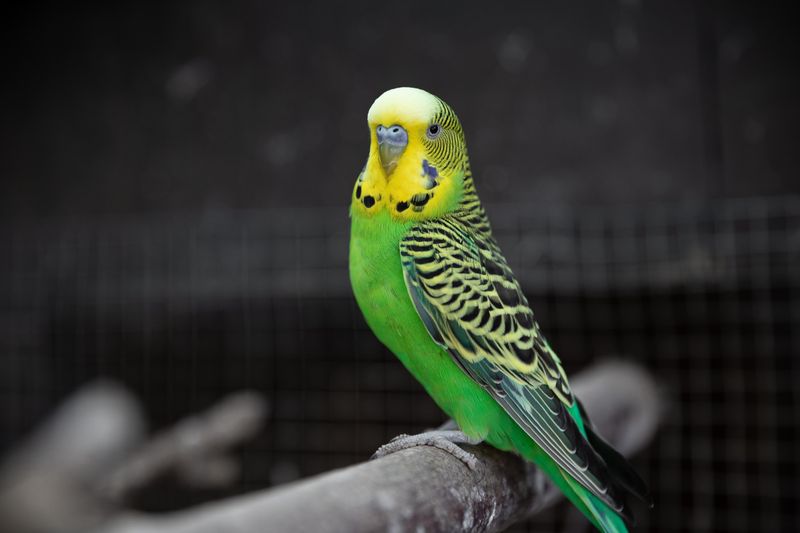
Budgerigars, often affectionately called budgies, are small parakeets hailing from Australia. Despite their diminutive size, budgies are renowned for their ability to mimic human speech and learn tricks.
Many budgie owners have successfully taught their feathered friends to whistle tunes, say simple words, and perform small tasks. Their intelligence, paired with a naturally curious nature, makes them one of the most trainable pet birds available.
Engaging with budgies through games and training sessions can strengthen the bond between the bird and the owner. Budgies thrive on social interaction, so spending time each day with them can make training a fun and fulfilling endeavor.
To start training a budgie, begin with simple commands and gradually introduce more complex tasks. Establishing a routine is key. Using positive reinforcement techniques, like treats and praise, can yield impressive results.
Their willingness to learn and adapt makes budgies a top choice for those new to bird training. With patience and consistency, you’ll find these charming birds are not just pets, but interactive companions.
2. Cockatiel
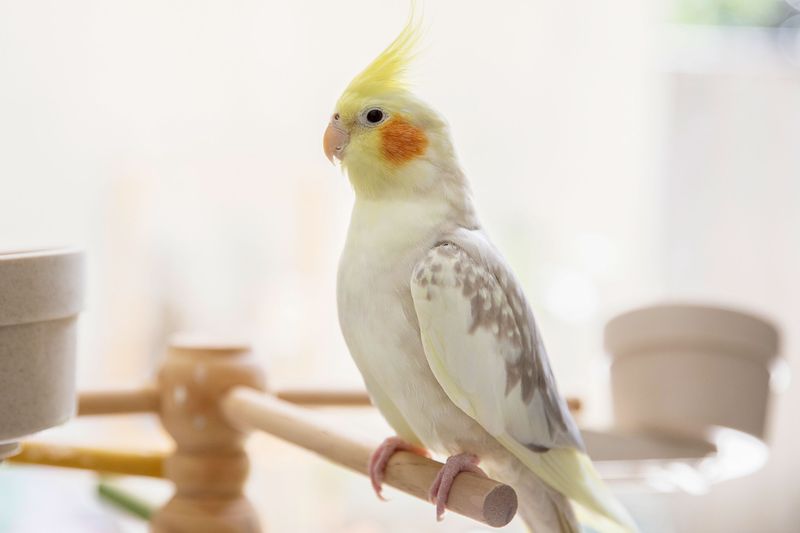
Cockatiels are beloved for their easygoing nature and charming personalities. Originating from Australia, these medium-sized parrots are closely related to cockatoos and share their relatives’ intelligence and sociability.
Known for their distinctive crests, cockatiels are quick learners who can master whistles, songs, and simple commands.
One of the reasons cockatiels are easy to train is their strong desire to bond with humans. They’re naturally affectionate and enjoy being part of the family dynamic. This makes them eager participants in training sessions, as they thrive on the attention and interaction they receive.
When training a cockatiel, it’s essential to be patient and gentle. Positive reinforcement, such as offering treats or head scratches, can motivate them to learn new tricks and behaviors.
Establishing a consistent training schedule helps cockatiels feel secure and ready to learn. With their playful disposition and eagerness to please, cockatiels are a delightful addition to any home looking for a trainable pet bird.
3. African Grey Parrot
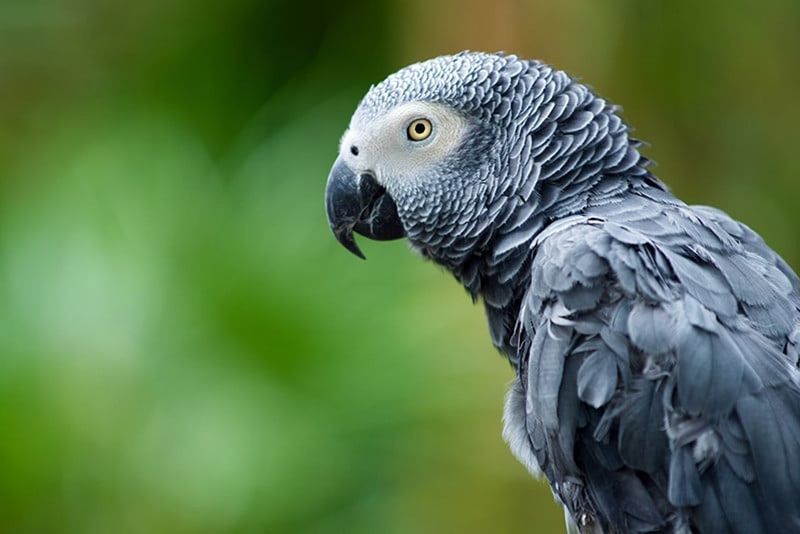
The African Grey Parrot is often considered one of the most intelligent bird species. Renowned for their remarkable ability to mimic human speech and comprehend language, these parrots are a favorite among bird enthusiasts who enjoy training their pets.
Their cognitive skills and problem-solving abilities are extraordinary. Training an African Grey requires patience and consistency, but the results can be astounding. These parrots can learn an extensive vocabulary and even use words in context.
Interactive toys and puzzles can further enhance their learning experience, making training sessions both stimulating and rewarding. African Greys thrive in environments where they feel mentally challenged.
Creating a routine that incorporates a variety of training activities can keep them engaged and prevent boredom. They respond well to positive reinforcement, and their strong bond with their owners often motivates them to learn.
In terms of trainability, African Greys offer a fascinating opportunity for those willing to invest time and effort into their bird’s education.
4. Lovebird
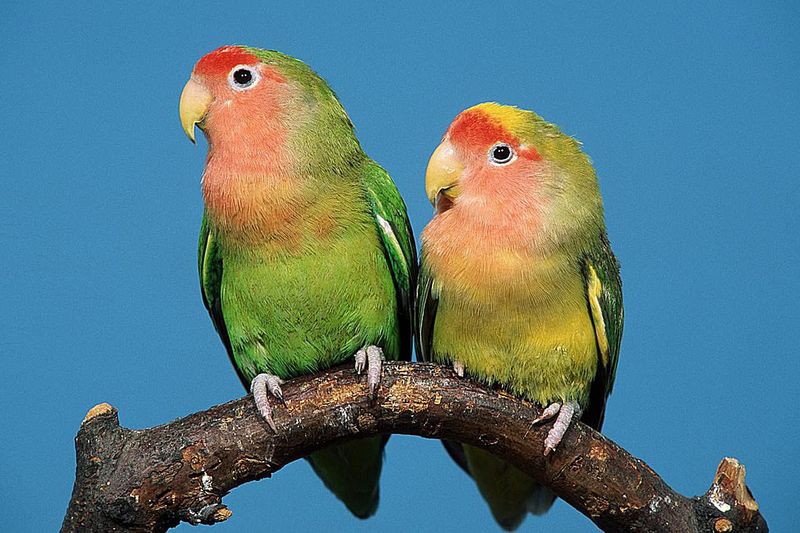
Lovebirds are small, affectionate parrots known for their vibrant plumage and strong pair bonds. Originating from Africa, these birds are highly social and thrive on companionship, making them relatively easy to train.
Their playful nature and curiosity make them eager learners, especially when training involves interactive play. To effectively train lovebirds, it’s beneficial to keep sessions short and engaging. They respond well to toys and activities that stimulate their minds and encourage exploration.
Positive reinforcement, such as treats and verbal praise, can help reinforce desired behaviors. While lovebirds can be stubborn at times, their sociable nature makes them receptive to training, particularly in environments where they feel secure and loved.
Building a bond through consistent interaction is key. With patience, lovebirds can learn a variety of tricks and commands, making them delightful companions for those who enjoy interactive pets.
5. Quaker Parrot (Monk Parakeet)
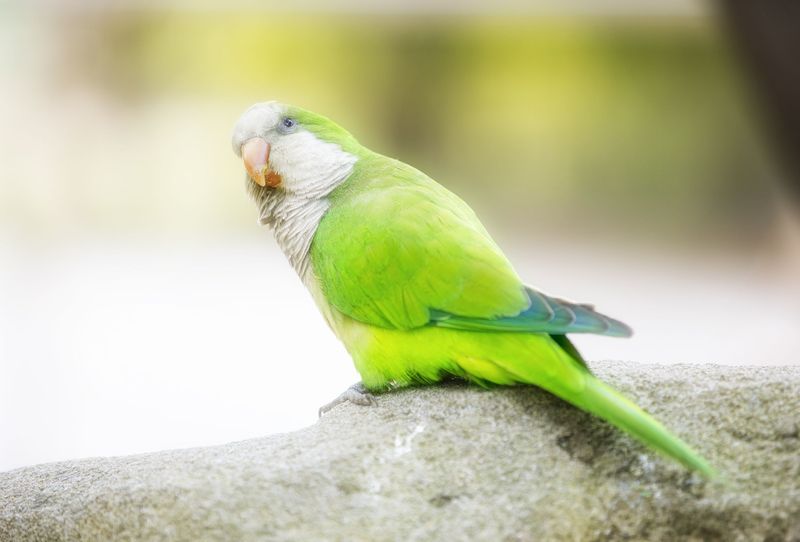
Quaker Parrots, also known as Monk Parakeets, are small to medium-sized parrots known for their intelligence and sociability. Native to South America, these birds are beloved for their ability to mimic speech and perform tricks, making them an excellent choice for those interested in training.
Quakers are highly adaptable and can quickly learn to associate words with actions, making them easy to train with consistent practice. Their extroverted personalities and desire for interaction mean they thrive on human attention, which can be leveraged during training sessions.
When training Quaker Parrots, it’s important to use positive reinforcement techniques such as treats and praise. Establishing a regular training routine helps them feel secure and encourages learning.
With their engaging personalities and eagerness to please, Quakers make for enjoyable and interactive pets that can provide endless entertainment.
6. Conure
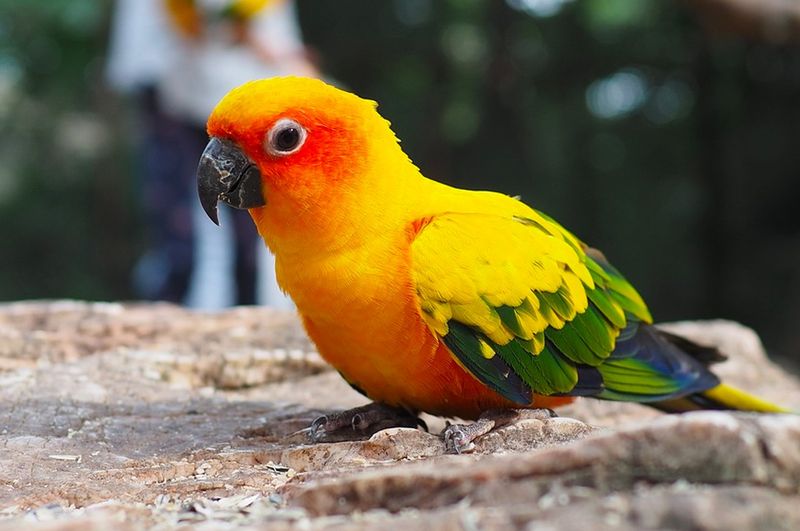
Conures are a diverse group of small to medium-sized parrots known for their vibrant colors and playful personalities. These birds are highly social and enjoy interacting with their human companions, making them relatively easy to train.
One of the most endearing traits of conures is their enthusiasm for play and learning. They are curious by nature and typically enjoy training sessions that incorporate games and challenges.
Positive reinforcement, such as offering favorite treats or affection, can motivate conures to learn new tricks and behaviors. Training a conure is most successful when sessions are kept fun and engaging.
These birds thrive in environments where they can explore and be stimulated mentally. Consistency and patience are key to helping conures reach their full potential as trainable and entertaining companions.
7. Senegal Parrot
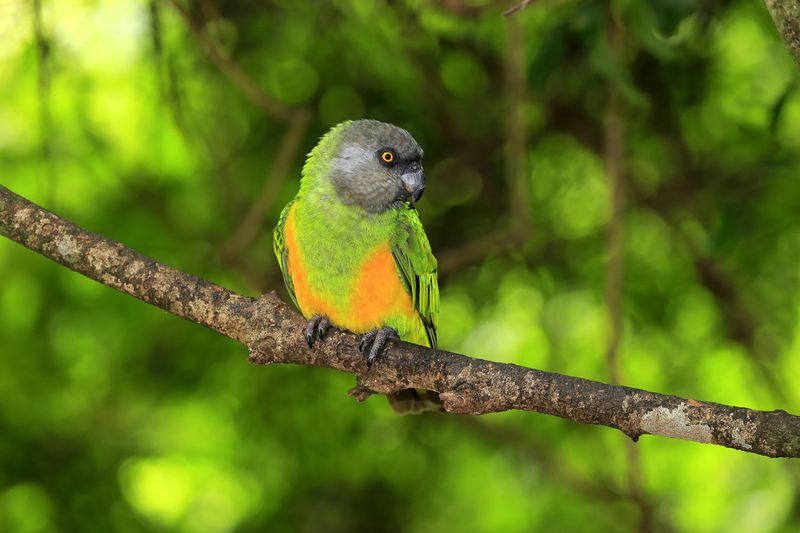
Senegal Parrots are small parrots native to West Africa, known for their quiet nature and gentle disposition. These traits, along with their intelligence, make them surprisingly easy to train.
Senegal Parrots enjoy interacting with their human companions and are quick learners when it comes to picking up new tricks and commands. Their calm demeanor allows them to focus during training sessions, which can lead to quicker learning.
Positive reinforcement techniques, such as treats and verbal praise, work well with Senegal Parrots, encouraging them to repeat desired behaviors. Training sessions should be consistent and interactive.
Incorporating toys and puzzles can keep Senegal Parrots engaged and mentally stimulated. With their affectionate nature and eagerness to bond with their owners, Senegal Parrots offer a rewarding training experience for those willing to spend time interacting with their feathered friends.
8. Pionus Parrot
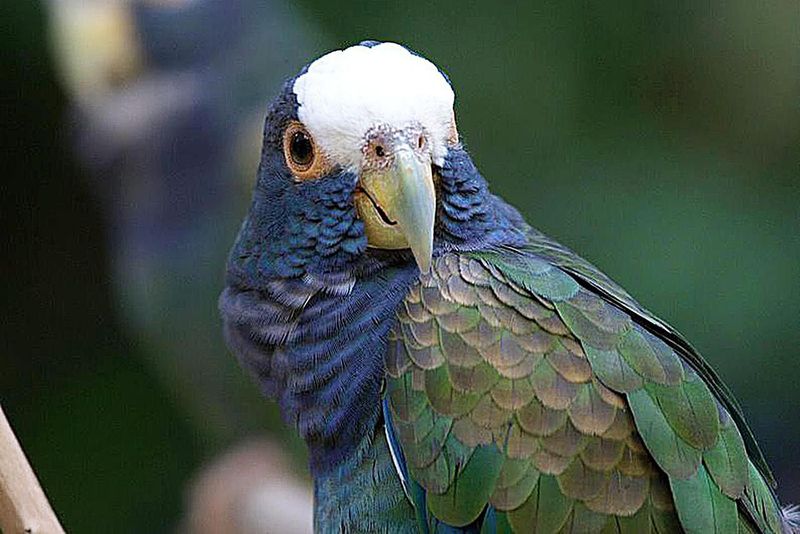
Pionus Parrots are medium-sized birds known for their gentle nature and quiet demeanor. Originating from Central and South America, these parrots are less vocal than many other species, but they possess a friendly disposition that makes them great companions.
Their laid-back attitude is paired with intelligence, making Pionus Parrots receptive to training. They are capable of learning a variety of tricks and commands, especially when training sessions are consistent and engaging.
Pionus Parrots respond well to positive reinforcement, which can help cement newly learned behaviors. Training a Pionus Parrot requires patience, but their affectionate nature makes the effort worthwhile.
They enjoy spending time with their human companions and appreciate the mental stimulation that training provides. With dedication and care, Pionus Parrots can become interactive and loving pets.
9. Parrotlet
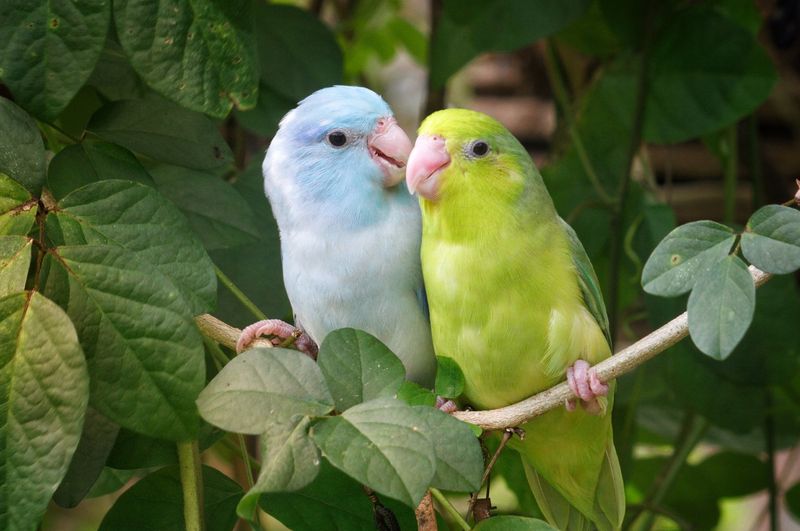
Parrotlets are tiny parrots with big personalities. Despite their small size, they are feisty and full of energy, making them an exciting choice for bird enthusiasts interested in training. Native to South America, these diminutive birds are intelligent and enjoy social interaction.
Training parrotlets can be a fun experience for both the bird and the owner. They are quick learners and can master various tricks and commands with regular practice.
Positive reinforcement, such as offering small treats or praise, can encourage desired behaviors and make training a rewarding activity. These birds thrive on attention and require consistent interaction to stay happy and healthy.
Establishing a routine that includes training sessions ensures parrotlets remain engaged and mentally stimulated. With their spunky attitudes and eagerness to please, parrotlets make delightful and trainable companions.
10. Rosella
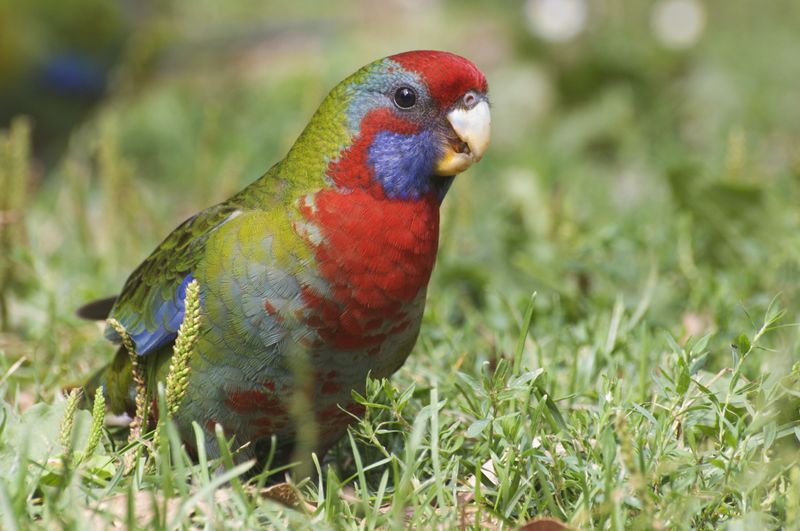
Rosellas are beautiful parrots native to Australia, known for their striking colors and lively personalities. Their beauty is matched by their intelligence, making them surprisingly easy to train.
Rosellas enjoy engaging with their human companions and can learn a variety of tricks and commands. To train a Rosella effectively, it’s important to maintain a routine and keep sessions positive and fun.
They respond well to gentle training methods that incorporate positive reinforcement, such as treats and praise. This helps build trust and encourages them to learn new skills.
Rosellas thrive in environments where they can explore and play. Providing toys and opportunities for mental stimulation can enhance their training experience.
With their vibrant appearance and engaging nature, Rosellas are a joy to train and make wonderful pets for those who appreciate a colorful and interactive bird.

